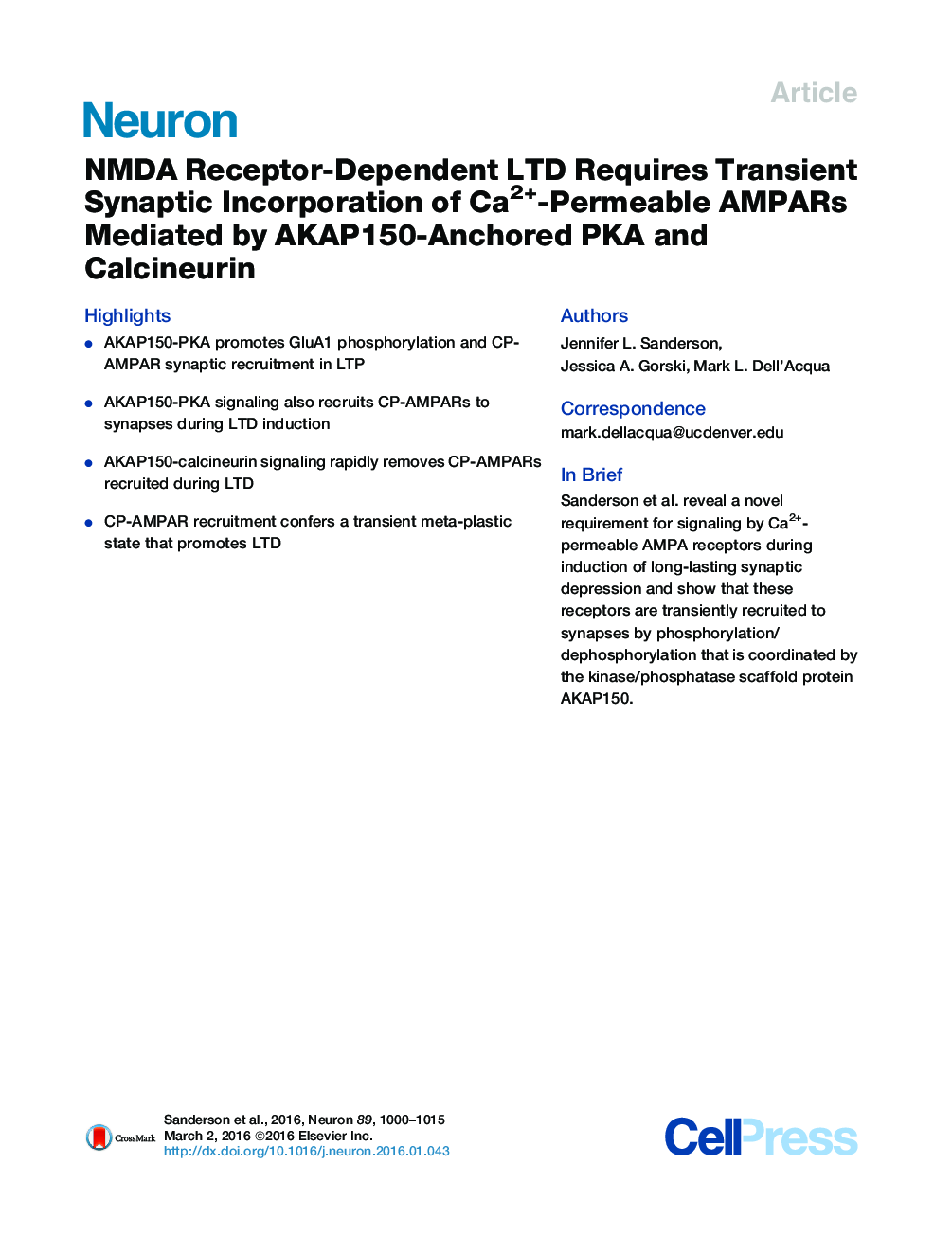| Article ID | Journal | Published Year | Pages | File Type |
|---|---|---|---|---|
| 4320799 | Neuron | 2016 | 16 Pages |
•AKAP150-PKA promotes GluA1 phosphorylation and CP-AMPAR synaptic recruitment in LTP•AKAP150-PKA signaling also recruits CP-AMPARs to synapses during LTD induction•AKAP150-calcineurin signaling rapidly removes CP-AMPARs recruited during LTD•CP-AMPAR recruitment confers a transient meta-plastic state that promotes LTD
SummaryInformation processing in the brain requires multiple forms of synaptic plasticity that converge on regulation of NMDA and AMPA-type glutamate receptors (NMDAR, AMPAR), including long-term potentiation (LTP) and long-term depression (LTD) and homeostatic scaling. In some cases, LTP and homeostatic plasticity regulate synaptic AMPAR subunit composition to increase the contribution of Ca2+-permeable receptors (CP-AMPARs) containing GluA1 but lacking GluA2 subunits. Here, we show that PKA anchored to the scaffold protein AKAP150 regulates GluA1 phosphorylation and plays a novel role controlling CP-AMPAR synaptic incorporation during NMDAR-dependent LTD. Using knockin mice that are deficient in AKAP-anchoring of either PKA or the opposing phosphatase calcineurin, we found that CP-AMPARs are recruited to hippocampal synapses by anchored PKA during LTD induction but are then rapidly removed by anchored calcineurin. Importantly, blocking CP-AMPAR recruitment, removal, or activity interferes with LTD. Thus, CP-AMPAR synaptic recruitment is required to transiently augment NMDAR Ca2+ signaling during LTD induction.
